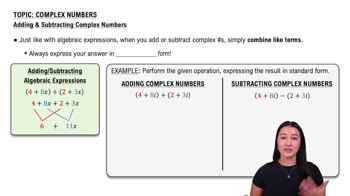Multiple Choice
Find the exact value of the expression.
478
views
2
rank
 Verified step by step guidance
Verified step by step guidance Verified video answer for a similar problem:
Verified video answer for a similar problem:



 6:14m
6:14mMaster Sum and Difference of Sine & Cosine with a bite sized video explanation from Patrick
Start learning